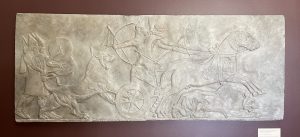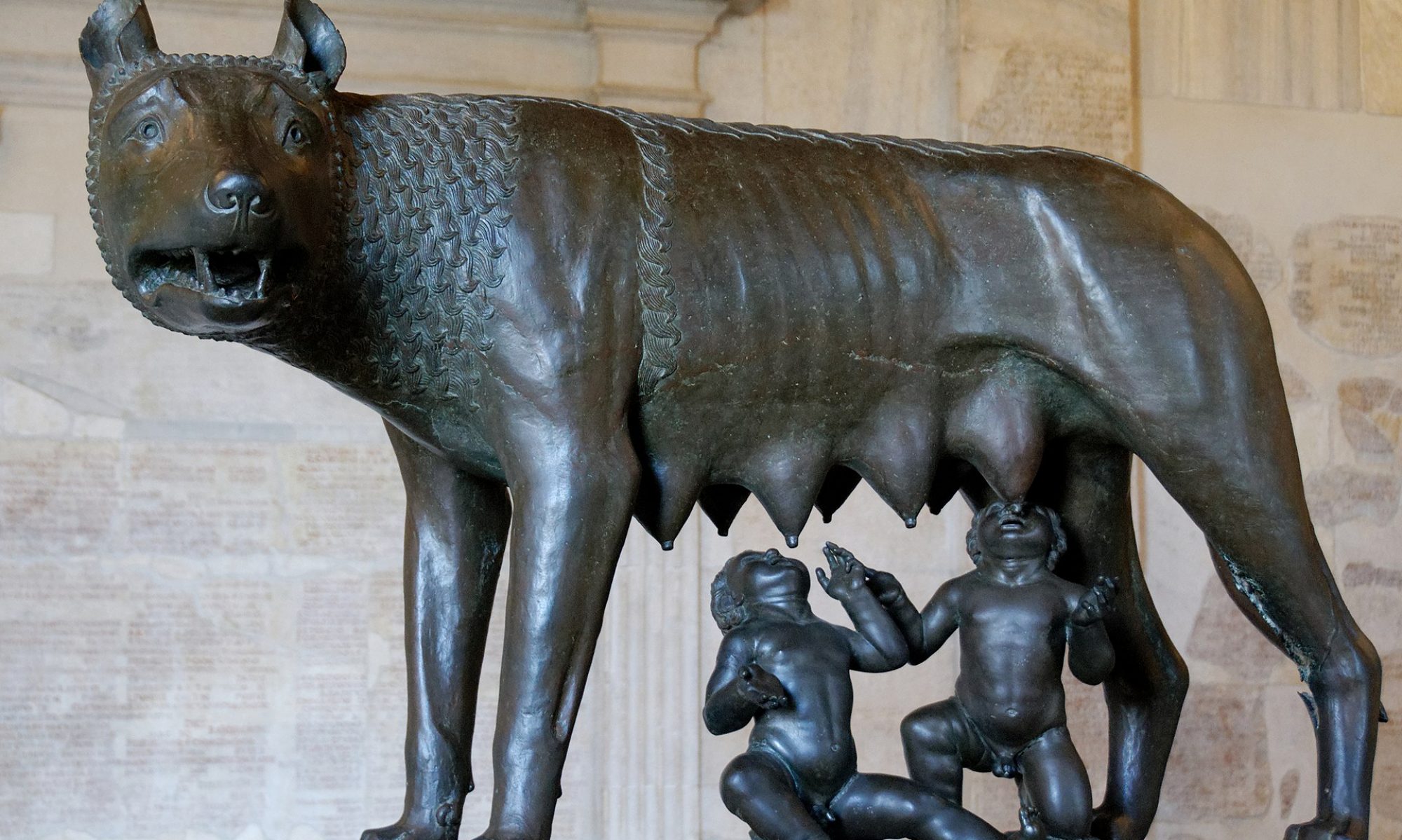
Lion Hunt Relief
This piece is a plaster cast of an ancient relief from the halls of the Northwest Palace of King Ashurnasirpal—a long term loan to Bowdoin from the Harvard Museum of the Ancient Near East. Depicted on the relief is King Ashurnasirpal II himself participating in the royal hunt, and we see the king atop a chariot, facing backwards to aim a bow and arrow at the head of a charging lion. In Assyria, lion hunting was known as “the Sport of Kings,” and had deeply traditional and symbolic roots. Assyrians saw outer lands and countries as chaotic and wild, and believed that the people outside the reach of the Assyrian Empire were at the mercy of the evil wilderness. The British Museum (home to many of the original reliefs) describes that Assyrians thought of their world as “encompassing a civilised heartland, situated in Assyria’s cities, which was surrounded by a hostile, untamed periphery. Wherever the king ruled, peace and prosperity abounded, whereas foreign lands were afflicted by chaos.”
By hunting and killing lions in a public and grandiose display, the king showed not only his ability to protect his people and nation from the dangerous “outer land,” but also his deified strength and served to link him further with the gods. In this ritualistic hunt, the lions represent the exotic strength of neighboring countries, as well as the untamed threat of the actual wilderness—both very real problems for the Assyrians. In defeating and killing the impossibly powerful lion, the king proves his strength to be superior to the wilderness and neighboring countries, which by extension displayed the power and strength of the Assyrian Empire as a whole. The use of wild animals in this commemorative piece is a nationalistic effort to prove the prowess and strength of a king and his empire, via the overpowering and killing of lions.
